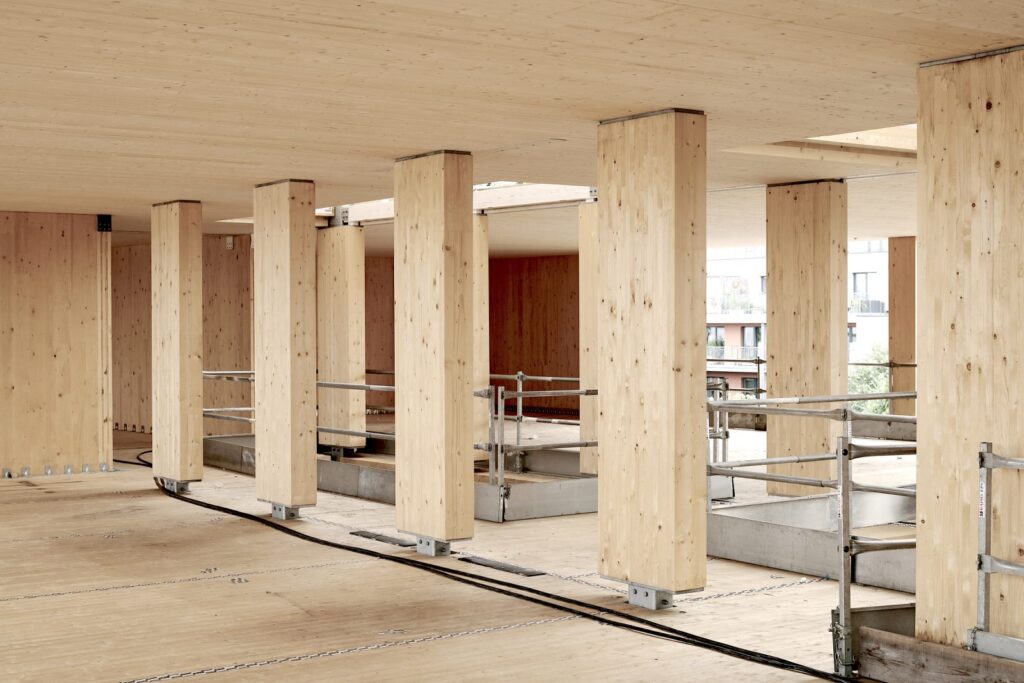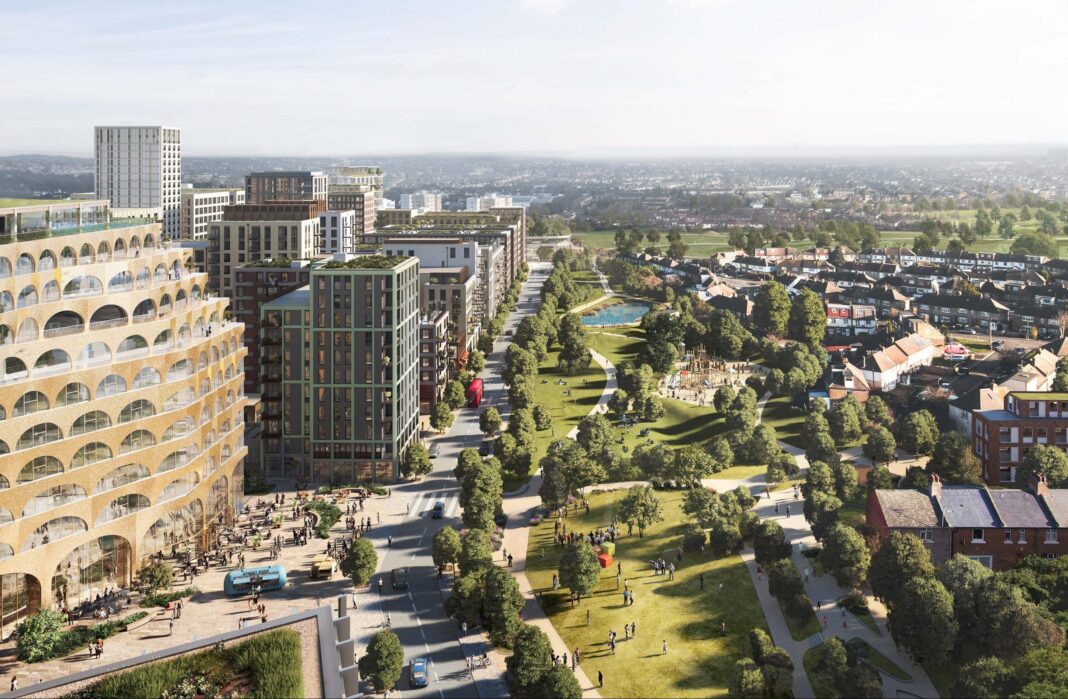Aviva has expanded its exposure to mass timber developments with a strong commitment to net zero and the UK’s climate readiness goals.
In 2021, the 325-year-old insurer became the first major insurance company in the world to commit to Net Zero by 2050, cutting carbon by 25% in 2025 and 60% by 2030.
The decision follows a successful pilot, which saw the UK’s largest insurer work with a panel of UK-based developers on sustainable projects.
Insurers have quoted mass timber projects with 800% higher premiums
Insurance and lack of financial incentives are obstacles to mass timber adoption, with Avia’s commitment now a springboard to drive decarbonisation across the built environment.
As reported by Architects Journal, insurers’ nervousness over timber in construction is regularly cited as one of the main reasons why concrete has not been replaced by timber in many projects.
Some brokers have quoted mass timber projects up to 800% higher than traditional ones.
Last week, Wood Central reported on a new 90% of concrete construction could be replaced by timber over the coming years with new products, financial incentives and greater education driving to greater adoption.
According to Alastair Ogle from Waugh Thielston Architects, it “will improve baseline knowledge and discussion and help people gain relevant approvals and insurance for their timber buildings.”

Speaking ahead of the Mass Timber Insurance Playbook launch, Mr Ogle is confident that massive strides have been made in the past few years.
“I hope the last few steps are soon to be taken. However, we’re a long way from timber becoming the go-to method of construction, which is where it should be.”
The announcement by Aivia, which has 18.7 million policyholders in the UK, Ireland and Canada, is a step in the right direction.
Aviva is looking to become a global leader in net-zero underwriting
According to Adam Winslow, CEO of UK & Ireland General Insurance for Aviva, developers want to build more sustainable commercial buildings using mass timber and modern construction methods.
“Aviva wants to embrace both: widening our underwriting appetite to insure commercial buildings using mass timber and using our risk management expertise to minimise associated risks,” Mr Winslow said.

The commitment is an important milestone, with Aviva being one of the first UK insurers to commit dedicated underwriting resources to develop more sustainable buildings.
Working with contractors, brokers and owners from the design stage, the insurer will ensure the resilience and repairability of buildings by using leading risk management strategies to safeguard them from water damage and fire.
Putting risk management at the centre of the design process mitigates risk while enabling a competitive and sustainable approach to insurance pricing.
The United Kingdom has emerged as a leader in carbon readiness, with Brent Cross Town in North London set to become the largest net-zero town centre in Europe.

Wood Central reports that the town centre will use cross-laminated timber to construct commercial offices from a hybrid of mass timber and low-carbon concrete.
The project follows the approval of an all-timber building located on the former site of Holborn Town Hall, which will boast a glulam frame along with cross-laminated timber slabs.
According to Mr Winslow, the carbon footprint of a building over its lifetime plays an important in determining its sustainability.
“If a building is designed to be replaced in the event of a relatively minor incident well within its design life, then it cannot be considered sustainable,” he said.
“Modern methods of construction that focus on resilience and repairability are critical to helping developers balance sustainability commitments with the safety of building users and the communities that they inhabit.”

In 2021, Aviva published its Building Future Communities report.
In the report, Aviva called for stronger planning regulation, greater collaboration on research across the building process and encouraging and incentivising property resilience to aid recovery.
By incorporating leading risk management strategies beyond current building regulations, Mr Winslow said, “Aviva (can) include greater use of mass timber in its projects.”
Will other insurers follow suit?
Architects Journal has asked other insurers whether they will follow Aviva’s direction on engineered timber in commercial buildings.
A spokesperson for Zurich, who contributed to and sponsored the Mass Timber playbook, said it would continue looking at buildings on a project-by-project basis.
They said: ‘We recognise the role mass timber can play in a move to more sustainable construction methods. Due to the individual nature of mass timber risks, we consider each on its own merits, taking into account a project’s scale, size, quality and risk mitigation measures.’
AXA Commercial’s mid-market and customer risk management director, Dougie Barnett, said: ‘[We have] been working with architects and developers for the past two years on several large projects incorporating engineered timber components.
‘Essential to this engagement has been a focus from the outset that we will commit appropriate risk engineering input to guide the design, ensuring that we have an acceptable risk during both the build and the occupancy phase of the project.’
He added: ‘Each case is considered on its individual merits to assess what capacity we are willing to commit. One of the developers we’re working with is keen to engage further on AXA’s considerations of ESG in the built environment so we can jointly explore thinking and challenges.’







